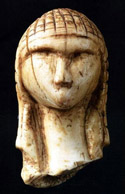Anthropology, Department of

Department of Anthropology: Faculty Publications
Document Type
Article
Date of this Version
1-7-2021
Citation
http://dx.doi.org/10.1016/j.fsir.2020.100070
Abstract
Reconstruction of fragmented material remains has been given a considerable attention in the fields of archaeology, forensic anthropology, and palaeoanthropology. Fragmented osseous remains are often found in cases of mass disasters, burning incidents, crash incidents, as well as bodily mutilation through criminal and suicidal activities. In cases where the remains are burnt or fragile, the handling of the remains becomes difficult and improper handling may lead to further destruction of the evidence. In such cases, digital restoration of the remains by means of threedimensional technology can be done as it is a non-invasive in nature and minimizes physical handling. It has been repeatedly demonstrated that virtual methods facilitate preservation, storage, and conservation of skeletal remains. For this current preliminary study, fragile fragmentary osseous remains were obtained and then digitally reconstructed. The data was acquired using hand-held 3D laser scanners and digitally reconstructed using software. The reconstructed specimen was then printed and could be used for further analysis due to the fragile nature of the original specimen.


Comments
© 2020 Published by Elsevier B.V. This is an open access article under the CC BY-NC-ND license